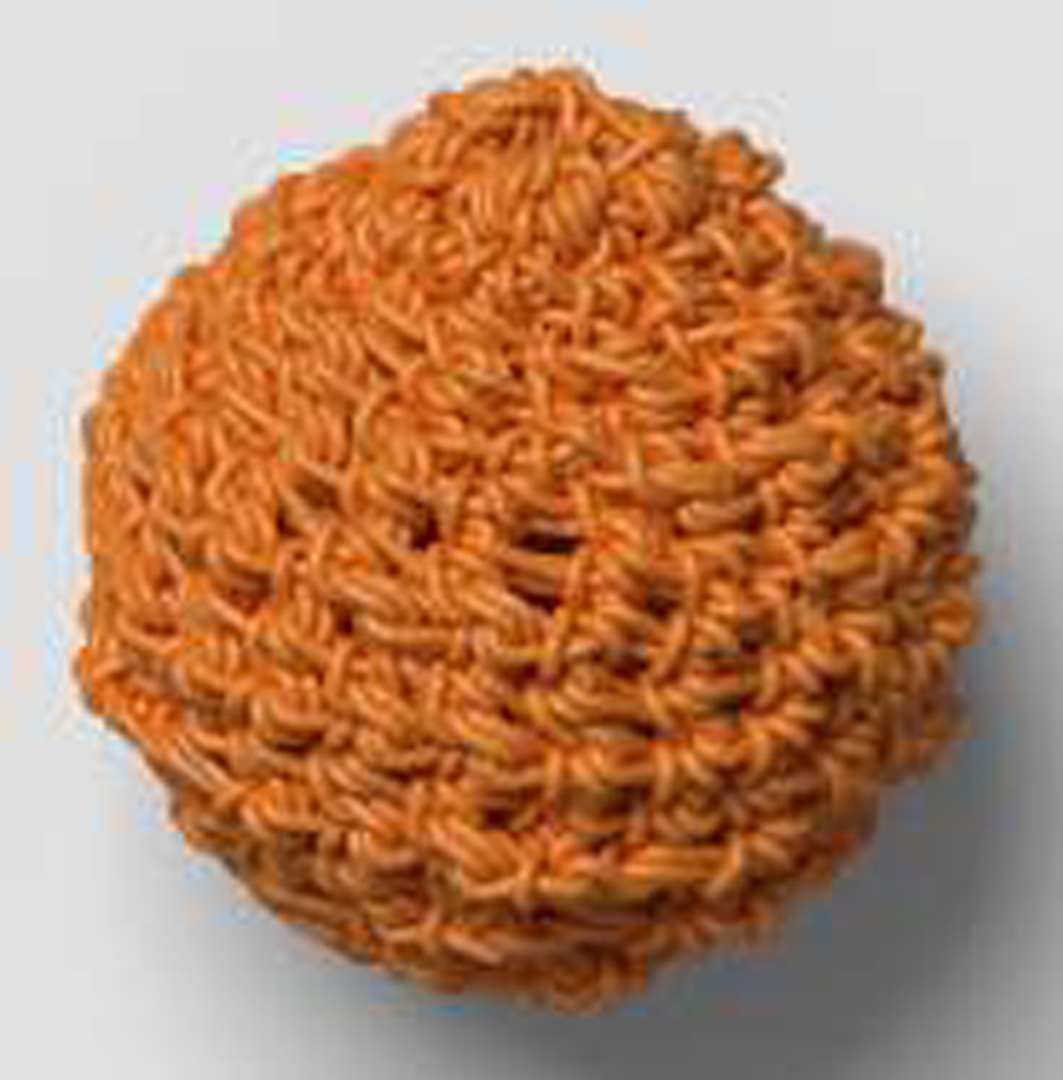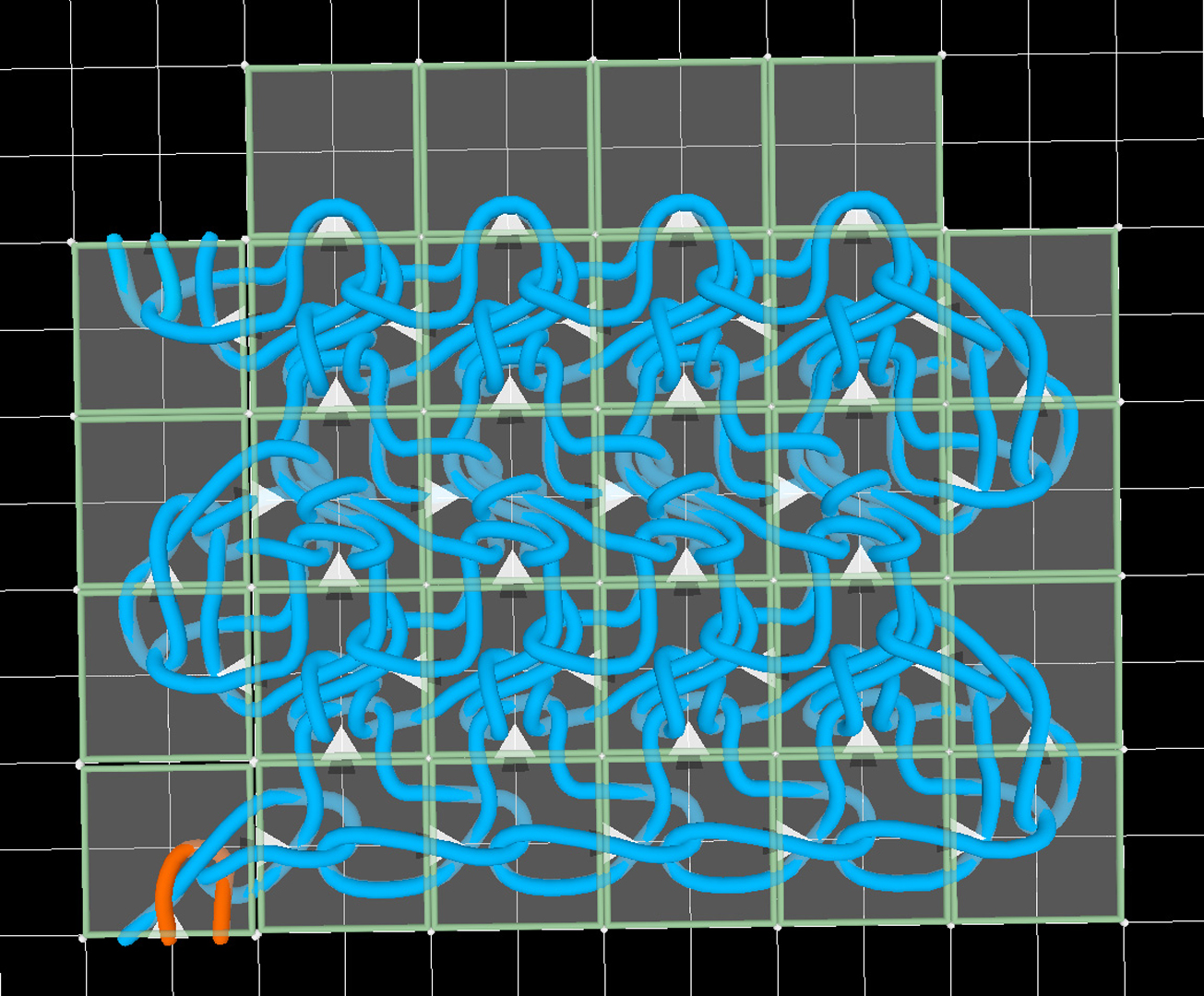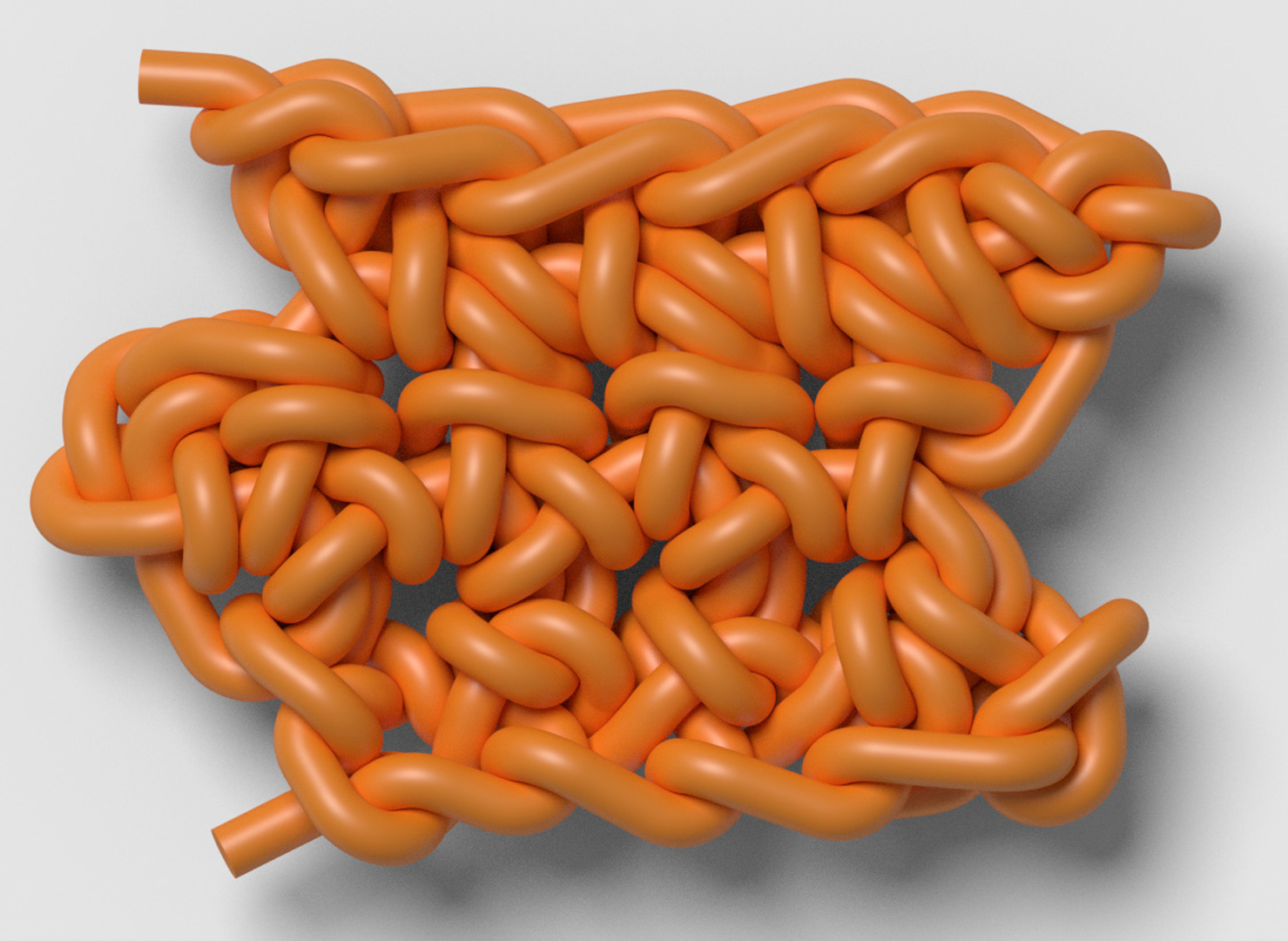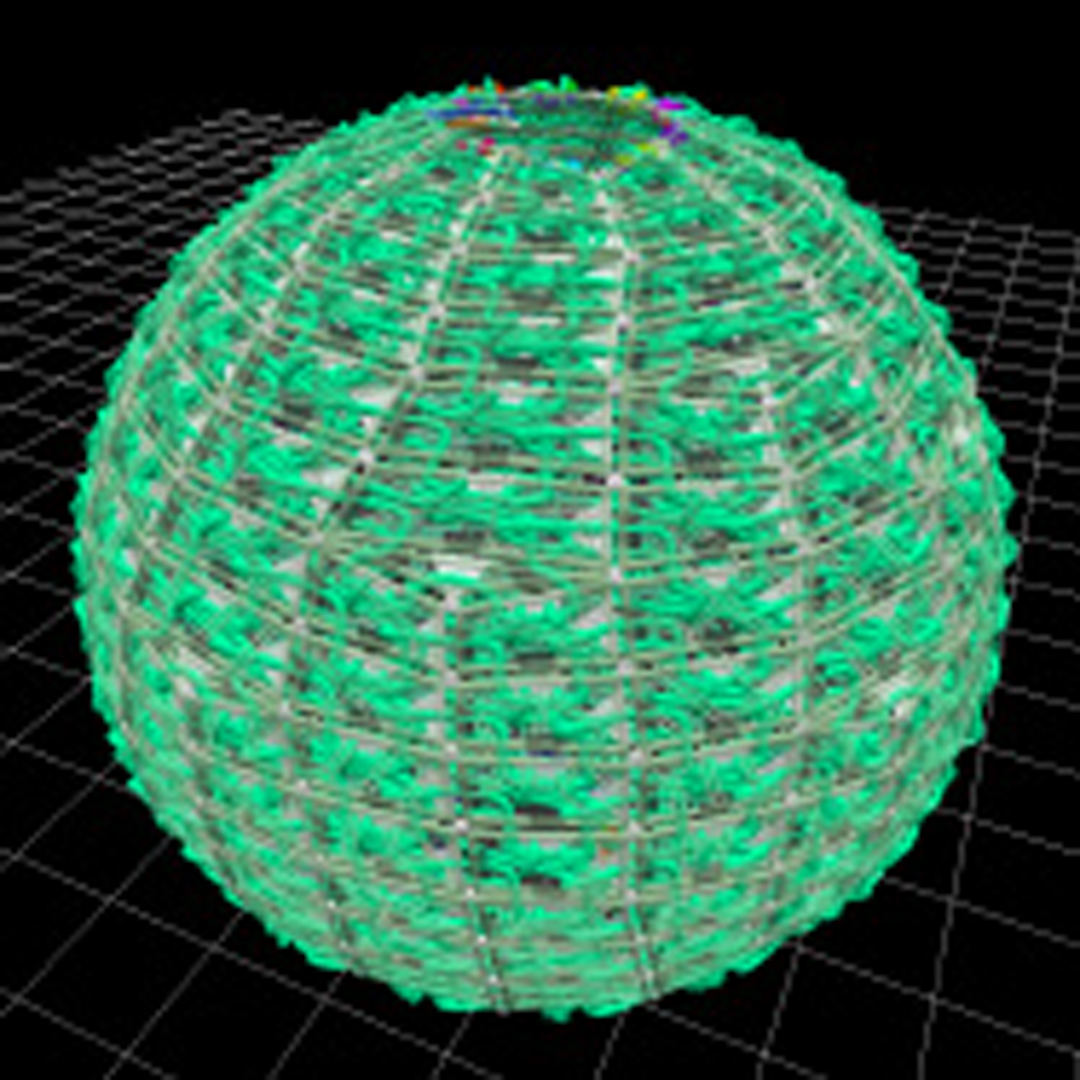“Representing Crochet with Stitch Meshes” by Guo, Lin, Narayanan and McCann
Conference:
Type(s):
Entry Number: 38
Title:
- Representing Crochet with Stitch Meshes
Presenter(s)/Author(s):
Abstract:
Crochet and knitting are two different techniques for textiles fabrication that involve flexible manipulation of a single continuous strand of yarn into interconnected loops that form a final stable object. It is natural, therefore, to ask if methods used to represent knit objects in computer graphics can be used to represent crochet as well. This poster answers in the affirmative, demonstrating that, with an appropriate new vocabulary of faces (tiles), the stitch meshes approach [Yuksel et al. 2012] can be extended to support crocheted objects (Figure 1).
Crochet and knitting differ in how loops are held and formed and in how the basic building blocks of patterns are described. In crochet, a single crochet hook is used both to hold a single leading loop and to pick up existing loops from elsewhere in the in-progress piece to form new stitches. Whereas in knitting, a queue of loops are held on knitting needles, and stitches are formed by operating (almost exclusively) on these active loops.
These differences in how loops are manipulated (particularly, the idea of a leading loop that is constantly used and re-formed) motivate our selection of edge types for representing crochet faces with stitch meshes. In order to select face contents, we draw on the Craft Yarn Council’s standard list of crochet chart symbols [2018].
Additional Images:








